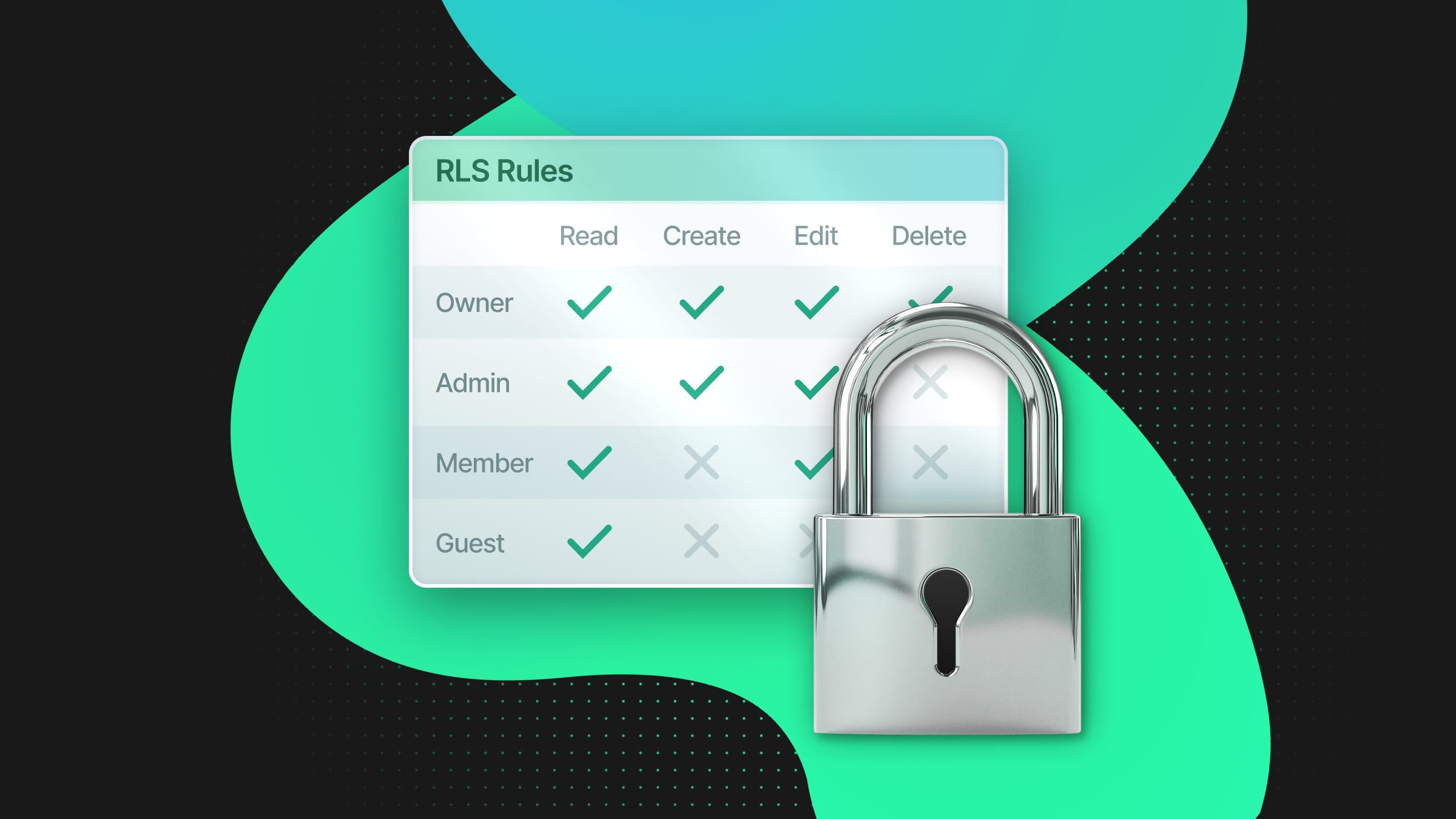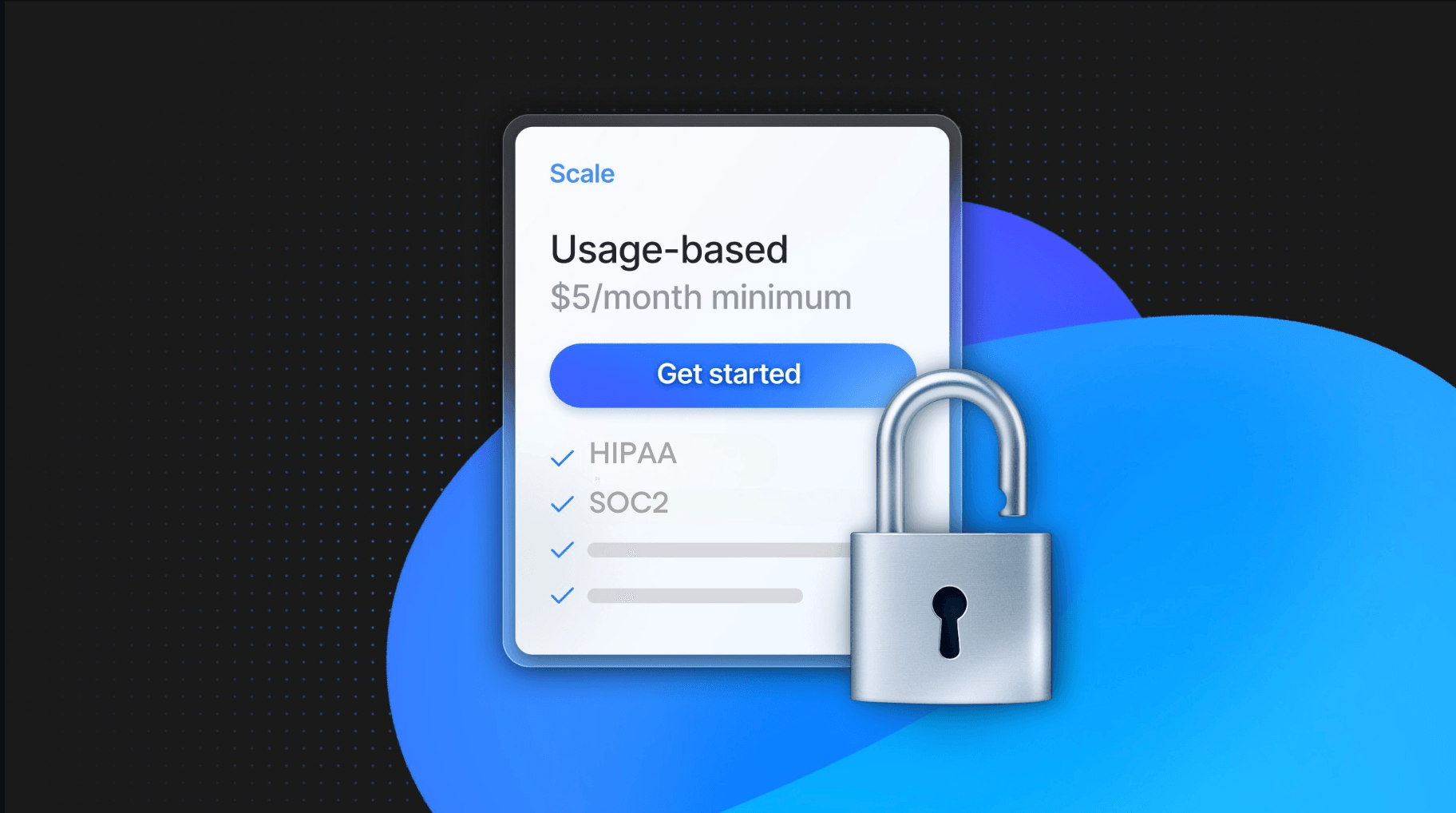
Update: Neon RLS is now part of the Neon Data API
In Neon, we recommend using a project-per-user pattern for multitenancy whenever possible. If this doesn’t work for you and you’re placing all your tenants within a single Postgres database, you should at least use RLS to prevent cross-tenant access—but expressing your entire authorization model with RLS is not for the faint of heart. In this blog post, we uncover why.
With the recent launch of Neon RLS, I’ve been building a lot of things with Postgres RLS, as well as talking to a lot of people who use it for their apps. And one question that keeps coming up is: should all of the authorization for my app be expressed with RLS? Should I even use RLS?
I’ll start by saying that RLS is not the best authorization model out there. First of all, the syntax itself is very dense and repetitive. For example, if you’re building a todo list, this is the SQL you’ll have to write to properly protect your todos table:
CREATE TABLE IF NOT EXISTS "todos" (
"id" bigint PRIMARY KEY,
"user_id" text DEFAULT (auth.user_id()) NOT NULL,
"task" text NOT NULL,
"is_complete" boolean DEFAULT false NOT NULL,
"inserted_at" timestamp with time zone DEFAULT now() NOT NULL
);
ALTER TABLE "todos" ENABLE ROW LEVEL SECURITY;
CREATE POLICY "create todos" ON "todos" AS PERMISSIVE FOR INSERT TO "authenticated" WITH CHECK ((select auth.user_id() = user_id));
CREATE POLICY "view todos" ON "todos" AS PERMISSIVE FOR SELECT TO "authenticated" USING ((select auth.user_id() = user_id));
CREATE POLICY "crud-authenticated-policy-update" ON "todos" AS PERMISSIVE FOR UPDATE TO "authenticated" USING ((select auth.user_id() = "todos"."user_id")) WITH CHECK ((select auth.user_id() = "todos"."user_id"));
CREATE POLICY "delete todos" ON "todos" AS PERMISSIVE FOR DELETE TO "authenticated" USING ((select auth.user_id() = user_id));Now, to be fair, we collaborated with Drizzle ORM to make this much simpler in TypeScript:
export const todos = pgTable(
"todos",
{
id: bigint().primaryKey(),
userId: text()
.notNull()
.default(sql`(auth.user_id())`),
task: text().notNull(),
isComplete: boolean().notNull().default(false),
insertedAt: timestamp({ withTimezone: true })
.defaultNow()
.notNull(),
},
(table) => [
crudPolicy({
role: authenticatedRole,
read: authUid(table.userId),
modify: authUid(table.userId),
}),
],
);However, it’s still not as expressive as something like Zenstack’s authorization syntax:
model Todo {
owner User @relation(...)
@@allow('read', auth() == owner)
@@allow('update', auth() == owner)
}Challenges of using RLS for authorization
But RLS has other issues! For example, if you are trying to check whether a user belongs to a given organization in order to let them access or manage a specific resource, you will likely bump into “infinite recursion detected in policy”. We learned this the hard way while working on the RLS implementation for a social network. There’s a couple of different ways around it:
- Create a view (what we did here)
- Use a function that bypasses RLS
Furthermore, RLS comes with a bunch of different pitfalls:
- You should not write
USING (auth.user_id() = user_id)but ratherUSING ((select auth.user_id() = user_id))so that Postgres can actually use its optimizer and cache the results per-statement. - If you have multiple policies for the same operation on the same table, sometimes they will be OR’d and other times they will be AND’d. This depends on whether they’re “permissive” or “restrictive” policies. Yikes!
- When RLS is applied to functions or views, you have to think about whether to define them with security_invoker as true or false. This will change whether RLS is checked for the role that defined the policy, or the role that invokes the function (or selects from the view). This is tricky to get right.
- By default, the RLS policy will be executed with the permissions of the owner of the view instead of with the permissions of the user executing the current query.
- Testing RLS is notoriously difficult. You have to write integration tests that launch Postgres and then make sure that you’re calling queries with different roles and different session settings, which is very hard to set up.
When and how to use RLS effectively
Even with all of these limitations, there’s still good reasons to express an app’s entire authorization model using RLS. But, as your data model gets more complex, you should move your authorization model to a higher-level framework that is easier to reason about and to test properly (e.g., CASL).
In this hybrid scenario, you can and should use RLS for certain core authorization checks. As an example, if you’re building a multi-tenant B2B SaaS application, you should at the very least use RLS to prevent any cross-tenant access. Cross-tenant data leaks will be terrible for your business, so protecting yourself at the lowest level of your stack will surely pay off.
It’s actually very easy to do this. You can simply make sure all of your tables have a tenant_id column and then apply the exact same set of RLS policies to all your tables. Using Drizzle’s RLS syntax, this is what that can look like:
const tenantPolicy = (table) =>
crudPolicy({
to: authenticatedRole,
view: sql`((select auth.session()->>'tenantId' = ${table.tenantId}))`,
modify: sql`((select auth.session()->>'tenantId' = ${table.tenantId}))`,
});
export const projects = pgTable(
"projects",
{
projectId: bigint()
.primaryKey(),
tenantId: text(),
name: text(),
// ...
},
table => [
tenantPolicy(table),
// other RLS policies!
]
);Then, just make sure that the JWTs you’re passing to Neon RLS have a tenantId claim, and you’re much better protected against data leaks.
Conclusion
So, is RLS for everyone? Well, no technology is for everyone. But RLS has its place and we at Neon are committed to supporting it with Neon RLS and pg_session_jwt. Reach out on our Discord if you have any questions!


